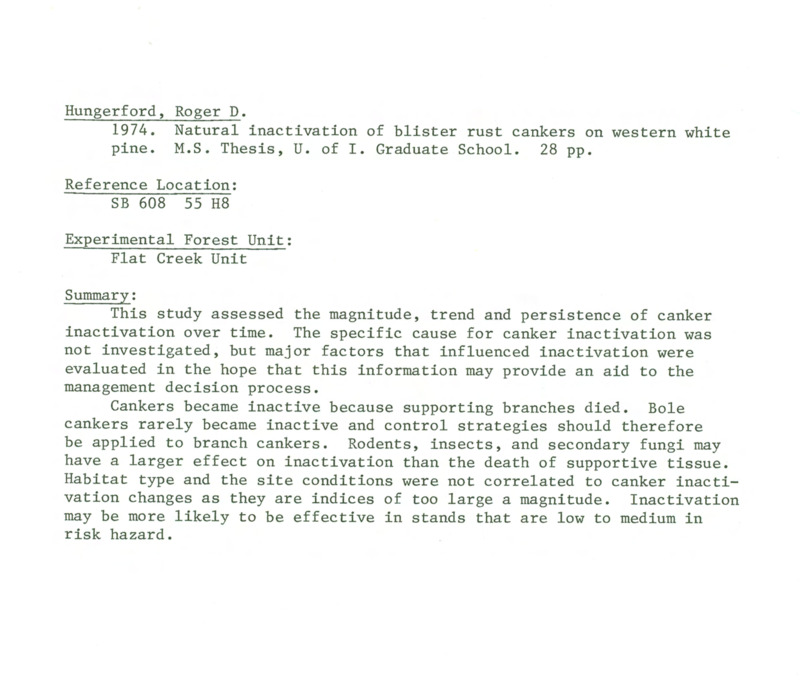PDF PREVIEW
Natural Inactivation of Blister Rust Cankers on Western White Pine Item Info
- Title:
- Natural Inactivation of Blister Rust Cankers on Western White Pine
- Creator:
- Hungerford, Roger D.
- Date Created:
- 1974
- Description:
- M.S. Thesis. This study investigating the magnitude, trend, and persistence of canker inactivation on western white pine over time. The specific cause for canker inactivation was not investigated, but major factors that influenced inactivation were evaluated in the hope that this information may provide an aid to the management decision process. Cankers become inactive because supporting branches died. Bole cankers rarely became inactive and control strategies should therefore be applied to branch cankers. Rodents, insects, and secondary fungi may have a larger effect on inactivation than the death of the supportive tissue. Habitat type and the site conditions were not correlated to canker inactivation changes as they are indices of too large a magnitude. Inactivation may be more likely to be effective in stands that are low to medium in risk hazard.
- Document Type:
- Thesis
- Library Call Number:
- SB 608.P55 H8
- Subjects:
- Flat Creek western white pine pinus monticola white pine blister rust canker canker inactivation silviculture
- UIEF Unit:
- Flat Creek
- Location:
- UIEF; Flat Creek
- Latitude:
- 46.851013
- Longitude:
- -116.724478
- Department:
- Department of Forest Resources
- Type:
- Text
- Format:
- application/pdf
Source
- Preferred Citation:
- "Natural Inactivation of Blister Rust Cankers on Western White Pine", UIEF Research Exchange, University of Idaho Library Digital Collections, https://www.lib.uidaho.edu/digital/uief/items/uief_0041.html
Rights
- Rights:
- In copyright, educational use permitted.
- Standardized Rights:
- http://rightsstatements.org/vocab/InC-EDU/1.0/

